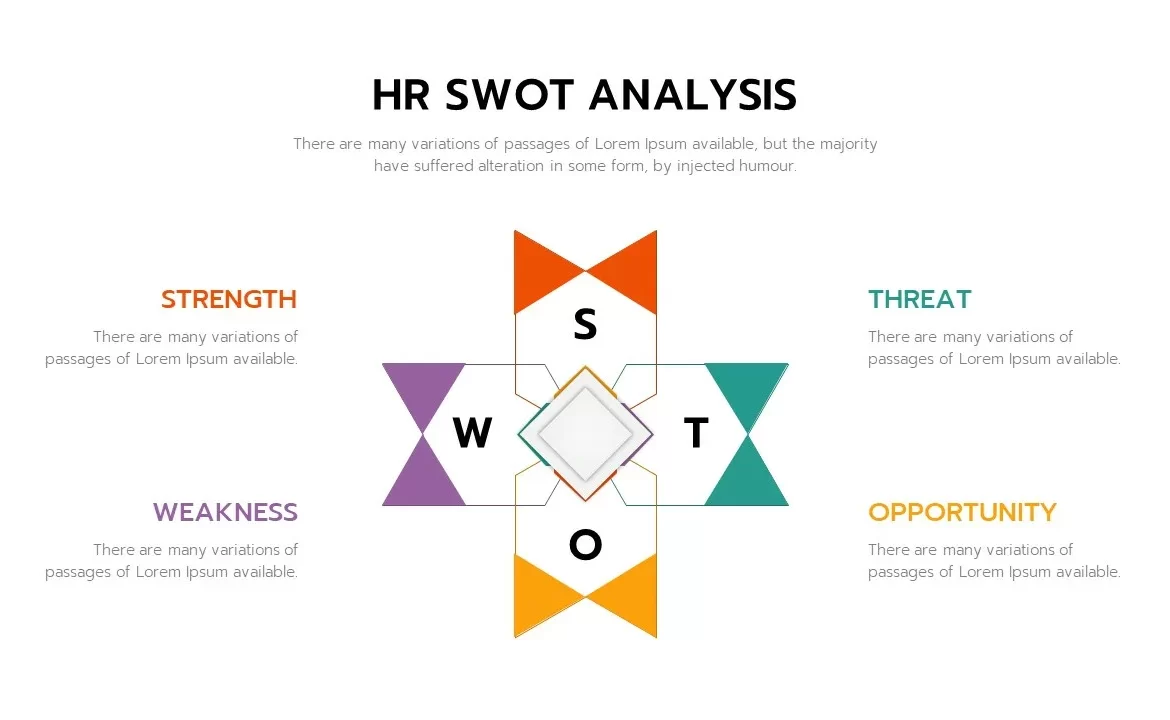Performing an HR SWOT analysis involves assessing the strengths, weaknesses, opportunities, and threats related to the human resources function within an organization. It helps identify areas of improvement, potential risks, and strategic opportunities for HR to contribute to the overall success of the company. Here’s a step-by-step guide on how to perform an HR SWOT analysis:
- Define the objective: Start by clarifying the purpose of the analysis. Determine what you want to achieve or understand better through this process. For example, you might want to evaluate the HR department’s effectiveness, identify areas for improvement, or assess HR’s alignment with organizational goals.
- Assemble the team: Gather a cross-functional team that includes HR professionals, senior management, and representatives from other departments. This ensures a comprehensive perspective and helps in gathering diverse insights.
- Identify strengths:
- Evaluate the HR department’s core competencies, skills, and expertise.
- Assess the effectiveness of HR policies, processes, and programs.
- Consider HR’s ability to attract, develop, and retain talent.
- Determine if HR has strong relationships with internal stakeholders.
- Analyze the overall HR culture and employee satisfaction.
- Determine weaknesses:
- Identify areas where HR is lacking in resources, skills, or expertise.
- Assess any deficiencies in HR policies, processes, or programs.
- Evaluate HR’s responsiveness to employee needs and concerns.
- Identify areas where HR might be hindering organizational performance.
- Explore opportunities:
- Analyze the external environment to identify emerging HR trends or industry best practices.
- Consider the organization’s strategic goals and identify ways HR can contribute.
- Look for opportunities to enhance employee engagement, performance, and well-being.
- Evaluate how HR can leverage technology or automation to improve efficiency.
- Identify threats:
- Assess potential risks and challenges that could impact the HR function.
- Consider legal or regulatory changes that could affect HR policies or practices.
- Identify competition for talent or challenges in attracting and retaining skilled employees.
- Evaluate any internal or external factors that could undermine HR’s effectiveness.
- Analyze and prioritize:
- Review the findings of the SWOT analysis and identify key insights.
- Prioritize the most critical strengths, weaknesses, opportunities, and threats.
- Consider the potential impact and feasibility of addressing each item.
- Develop an action plan:
- Based on the prioritized SWOT analysis, develop a plan to leverage strengths, address weaknesses, capitalize on opportunities, and mitigate threats.
- Set specific goals, objectives, and timelines for each action item.
- Allocate necessary resources and assign responsibilities to implement the plan.
- Monitor and review:
- Regularly monitor the progress of the action plan and track key metrics.
- Review and reassess the HR SWOT analysis periodically to ensure its relevance.
- Make adjustments to the plan as needed based on changing circumstances.
Remember, the HR SWOT analysis is a dynamic process that should be revisited regularly to stay aligned with the organization’s evolving needs and challenges.
Became a Certified HR Professional. Join Next Innovation Asia, The best HR Training Institute in chennai, we offering Practical HR Courses with Assured Job Support.
Join us to grow your career in HR Domain

